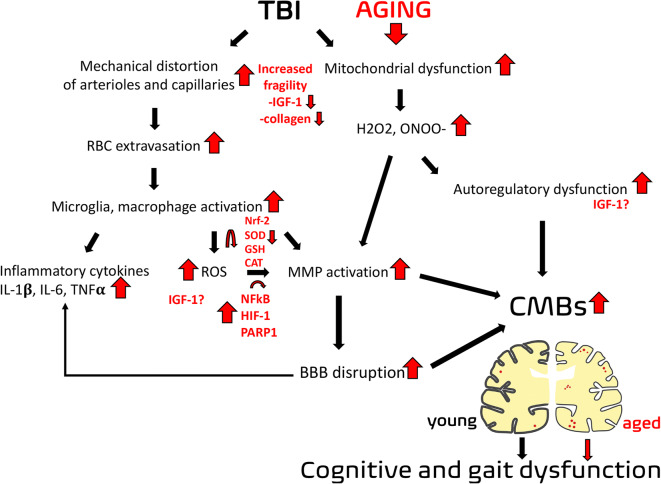Fig. 4.
Possible mechanisms of the synergistic effect of traumatic brain injury and ageing on the formation of cerebral microbleeds. Please see detailed description in the text. Traumatic brain injury (TBI) leads to mechanical distortion of cerebral vessels, which may directly lead to injury of the vascular wall and formation of microhemorrhages around cerebral arterioles and capillaries. This mechanism may be enhanced by ageing via age-related changes of the cerebrovascular wall leading to increased fragility of the vessels. TBI-induced mitochondrial oxidative stress and production of reactive oxygen species (ROS) and inflammatory mediators in activated microglia and macrophages following TBI may be exacerbated by ageing due to the age-related decreased antioxidant cellular mechanisms. In addition to the direct damage of the cerebrovascular wall, TBI-induced autoregulatory dysfunction may contribute to the development of cerebral microbleeds by placing increased hydrostatic burden on the cerebral microcirculation due to lack of proximal protection against blood pressure. Autoregulatory dysfunction may be exacerbated by age-related deficiency of circulating insulin-like growth factor 1 (IGF-1). These mechanisms converge on the disruption of the blood-brain barrier (BBB) and formation of cerebral microbleeds and consequent cognitive and gait dysfunction following TBI. We posit that enhanced vascular fragility, increased cerebrovascular oxidative stress and autoregulatory dysfunction in the elderly result in the formation of more cerebral microbleeds and more severe impairment of cognitive and gait function compared to young patients

